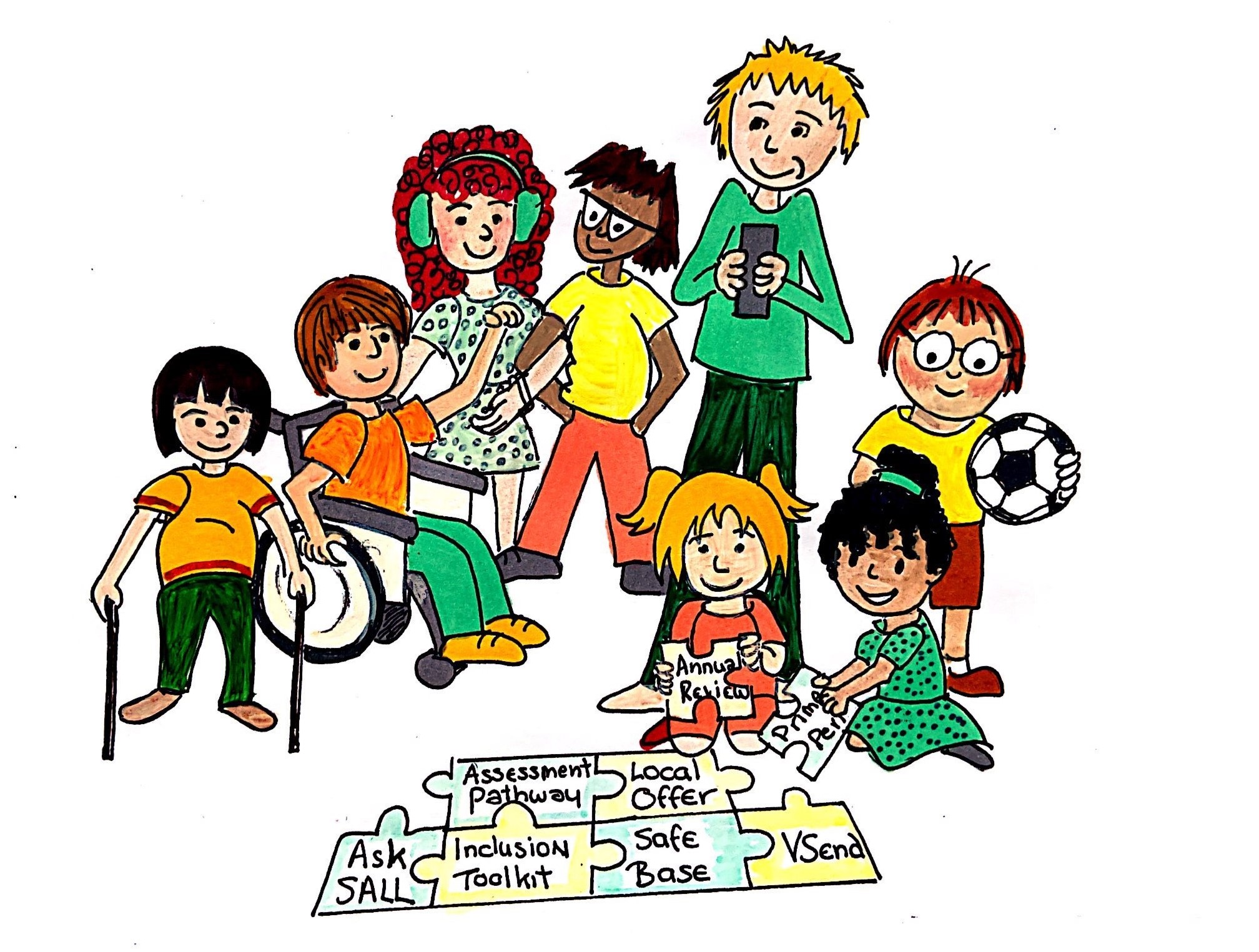Level 3-4 strategies to support targeted interventions
High quality teaching strategies, approaches and adaptations for pupils should be implemented and supplemented
0-5
- in addition to High Quality Teaching strategies, these children are likely to need enhanced adult support to:
- to support social interactions
- to prepare and provide visual resources
- to prepare them for activity and learning experience
- may benefit from advice and support from a Habilitation Specialist from SEST with regard to assessing and improving learning environments for visually impaired children.
- attention will need to be given to learning environment and reasonable adjustments made. It may also include orientation around environments, development of early mobility, self-help and independence skills. May benefit from additional specialist equipment
- mainstream environment with regular targeted small group support.
- positive learning environment that encourages confidence to use low vision aids such as magnifier.
- some modifications to the learning environment, factors such as glare, lighting and blinds are considered
- advice from SEST and other external agencies is implemented in the setting
- access to specialist equipment where required
- promotion of early social skills and self-advocacy in relation to their vision impairment.
- awareness that child may need more time to complete tasks and that equality of access may mean that they need to do some things differently
- on-going opportunities for individual support focused on specific targets with reinforcement in whole group activities to aid transfer of skills
- environmental considerations are made to meet the needs of all children e.g. seating position when seated on the carpet or in a group, personal space and room layouts, displays and signage and clear presentation of visual learning materials
- peer group to receive some advice on how to be supportive and have some awareness of vision impairment
- key adults should have a good understanding of the individual’s vision impairment and how it affects their understanding and access to learning and social opportunities
- a monitoring system should be in place to assess the child's needs, identify outcomes, implement support and monitor and evaluate progress
- strategies to include a learner with an eye condition are in place and identified
- flexibility of groupings allows for buddy support, good role models and focused teaching
- further modification of level, pace, amount of adult talk to address child’s identified need
- there may be need for very structured and multi-sensory approaches to learning and enhanced opportunities to use technological aids
- use of visual and auditory reminders, timers, resources and rewards to develop independence
- training for staff may include:
- training in the use of specialist equipment to support access to learning
- bespoke training for staff in meeting needs of a vision impaired pupil
- additional courses provided by RNIB or VIEW to enhance understanding of vision impairment.
- the lead practitioner takes responsibility for supporting others to devise, deliver and evaluate a personalised programme that accelerates learning
- children are taught strategies and provided with resources to assist with the development of independent learning
5-16
- in addition to High Quality Teaching strategies, these pupils may need daily support from an adult in school. For example, TA or SENDCo
- to access written materials
- to provide opportunities to explain use of materials or presentations
- to support social interactions
- to prepare and provide visual resources
- to prepare student for class activity or learning experience
- may benefit from advice and support from a habilitation specialist from SEST with regard to assessing and improving learning environments for visually impaired student. Attention will need to be given to learning environment and reasonable adjustments made. It may also include orientation around environments, development of mobility, self-help and independence skills. May benefit from additional specialist equipment
- attention will need to be paid to glasses wear, seating position in classroom and clear presentation of visual learning materials
- positive learning environment that encourages pupil confidence to use low vision aids such as magnifier.
- some modifications to the learning environment, factors such as glare, lighting and blinds are considered
- advice from SEST is implemented in the classroom
- access to specialist equipment where required
- promotion of social skills and self-advocacy in relation to their vision impairment.
- awareness that pupil may need more time to complete tasks and that equality of access may mean that they need to do some things differently
- peer group to receive some advice on how to be supportive and have some awareness of vision impairment
- key adults should have a good understanding of the individual’s vision impairment and how it affects their understanding and access to learning and social opportunities
- additional time may be required for pre- learning and consolidation
- specific and consistent use of language across all learning environments
- appropriate differentiation or modifications to the curriculum or to the environment
- strategies to include a learner with an eye condition are in place and identified
- differentiated questioning and explicit language used to explain whole class responses
- flexibility of groupings allows for buddy support, good role models and focused teaching
- building up a picture of need in relation to exam access arrangements will be required. Such arrangements may include additional time, enlarged papers, rest breaks and use of equipment. This must reflect the child's normal way of working.
- training for staff may include:
- training in the use of specialist equipment to support access to learning
- bespoke training for staff in meeting needs of a vision impaired pupil
- additional courses provided by RNIB or VIEW to enhance understanding of vision impairment.
- resources may include RNIB (eye condition leaflets), RNIB Bookshare for free resources, VIEW (teaching and learning strategies), NatSIP (accessibility guidance for assessment)


